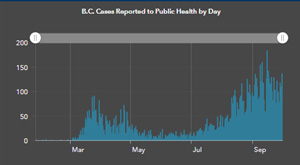
Sunday October 4, 2020 | VICTORIA, BC
by Mary P Brooke, B.Sc., Editor | Island Social Trends
There have been 9,381 cases of COVID-19 in BC to date, with 161 of those new today.
There are 1,302 active cases and about 3,000 people are under active public health monitoring due to identified exposure.
In the latest BC Centre for Disease Control (BC CDC) statistics on October 2 there are new cases across all age groups except 80+. That includes 12 more cases in children under the age of 10 (total 315) and 10 new cases in tweens-and-teens of ages 10 to 19 (total 543). The number of COVID cases among children and teens has been steady rising each day, for two months now.
The age group with the highest number of cases is 20-29 year of age — with 21 new cases, bringing that age group total to 2,147.
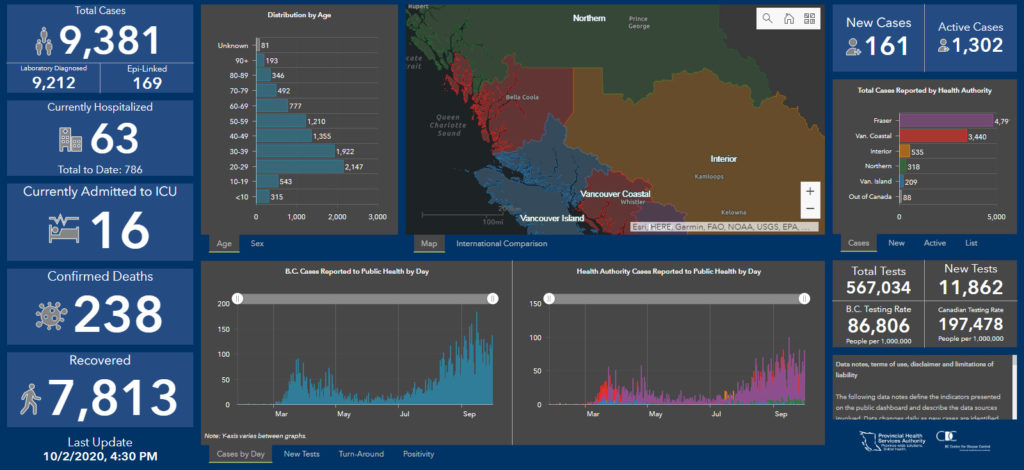
That is followed closely by the 1,922 total case tally for the 30-39 age group (with 30 new cases today).
Unlike in the earlier phase of the pandemic this year when most new cases were among seniors, during the last two weeks all age groups have seen steady additions to case numbers.
As people spend less time outdoors and more time indoors as the weather cools, COVID-19 transmission is more likely. A second wave — already begun — has the potential to become worse, and public health advisories are to keep bubbles small and limit our social interactions beyond what is necessary.
Case profile among adults:
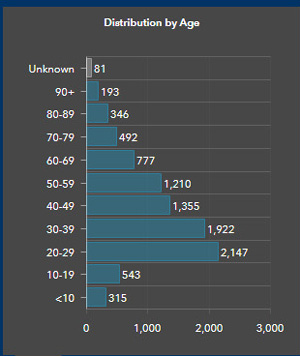
Seniors in the 60-69 year age group (generally still active in the economy and community) saw 16 new cases in today’s stats (on top of 17 yesterday).
The surges in COVID cases among adults are evident in the BC CDC stats for October 2:
- age 20-29: +21 (total 2,147)
- age 30-39: +30 (total 1,922)
- age 40-49: +30 (total 1,355)
- age 50-59: +21 (total 1,210)
- age 60-69: +16 (total 777)
Even the elderly set is seeing larger daily case numbers in recent weeks compared to summer. As of October 2:
- age 70-79: +11 (total 492)
- age 80-89: +0 (total 346)
- age 90+: +0 (total 193)
However, note that 81 cases in the October 2 data profile remain ‘unattached’ to any age group. There could possibly have been more cases in any of the above age groups than presently shown. ‘Unknown’ age entries become slotted into future data sets once the information is known.
Testing for COVID-19:
In BC, testing is available for people who have symptoms. In the October 2 profile, 11,862 tests for COVID-19 had been done in the last 24 hours in BC (with 1,037 of those in Island Health).
Hospitalizations:
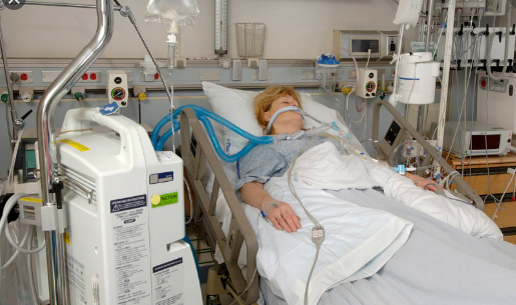
There have been 786 people in hospital to date in BC due to COVID-19 — currently 63 (16 in intensive care).
There were three new COVID-related deaths in today’s BC Centre for Disease Control (BC CDC) statistics. The total year to date is 238.
The number of new hospital admissions by day has stabilized in the past two weeks, says BC CDC; however they add that the number of cases currently in hospital has increased over the past four days (September 28 to October 1).
Vancouver Island profile:
There were no new cases on Vancouver Island today. Total cases to date remain at 209. Four cases remain active.
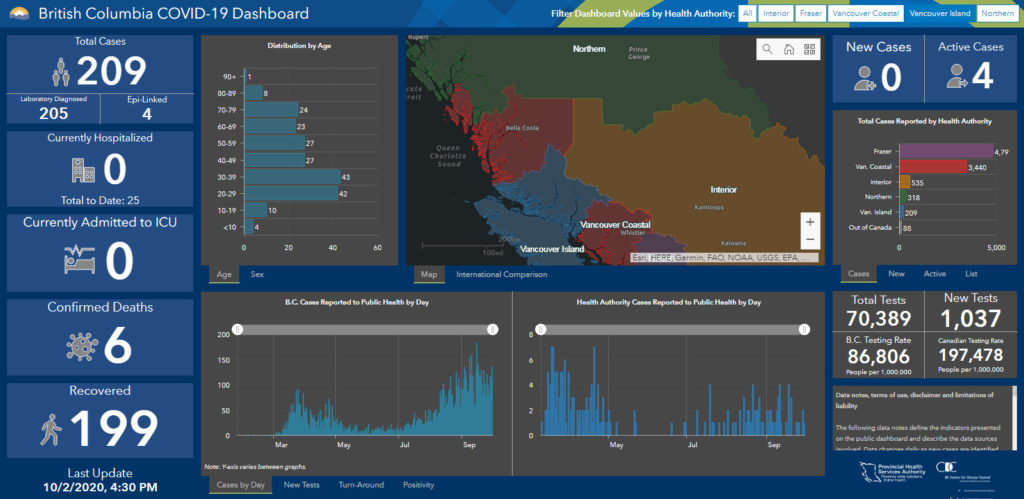
Hospitalizations stand at 25 to date on the island, but no one is presently hospitalized in Island Health.
There have been six deaths this year to date on Vancouver Island during COVID (the latest one just this week, a man who died at home with COVID only determined post-mortem).
On Vancouver Island 199 cases are listed as recovered.
Safe Halloween requires COVID-awareness:
As part of safe social celebrations in October — a month right now in the midst of the second wave of COVID-19, the BC CDC has issued social safety recommendations for people to follow around Thanksgiving, Halloween, Remembrance Day and probably also Christmas.
“The most likely source of infection remains contact with a local case or cluster,” it was stated by the BC CDC in their weekly summary.
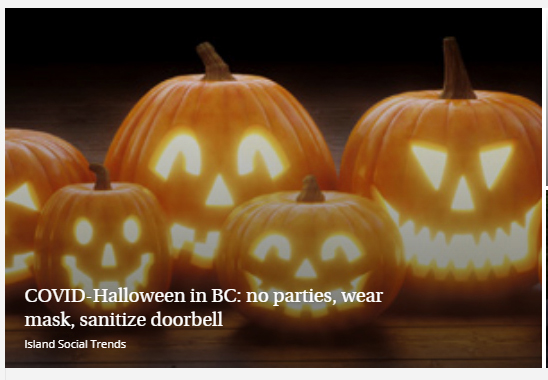
The BC CDC COVID Halloween guidelines are now online under a category called ‘safer celebrations’.
Precautions as posted by BC CDC include no large Halloween parties, handing out only pre-packaged treats, wearing a non-medical face mask (or similar covering of nose and mouth), sanitizing doorbells and doorknobs, or handing out treats standing outside your home instead of trick-or-treaters coming to your door.
Behind the statistics:

As everyone knows, behind the COVID-19 statistics are all the impacted families, disrupted communities and businesses, and changes in how we carry out our daily lives and social relationships.
The mental health impacts of this sudden loss and massive shifts will have ripple effects in society for decades.



